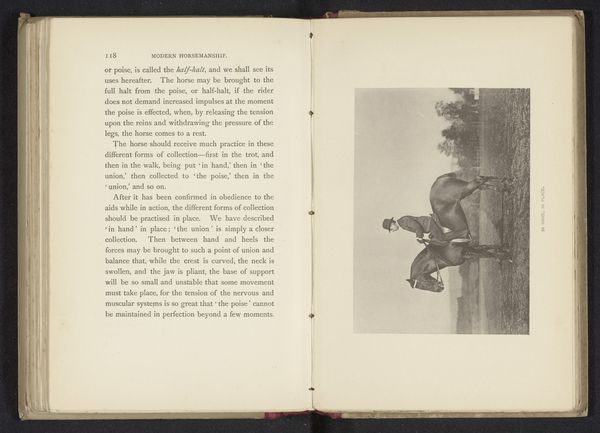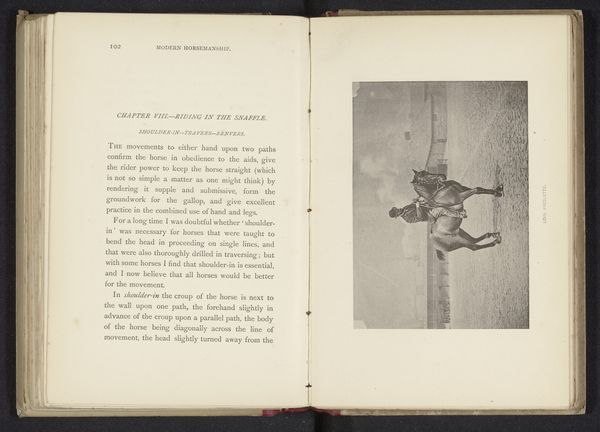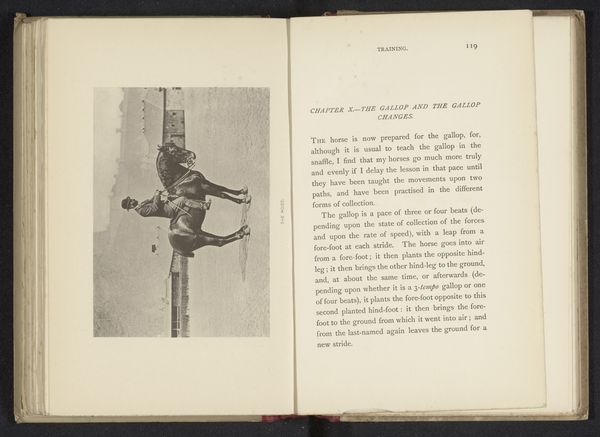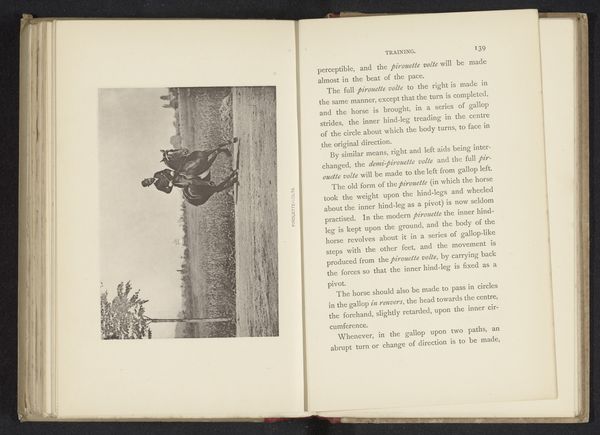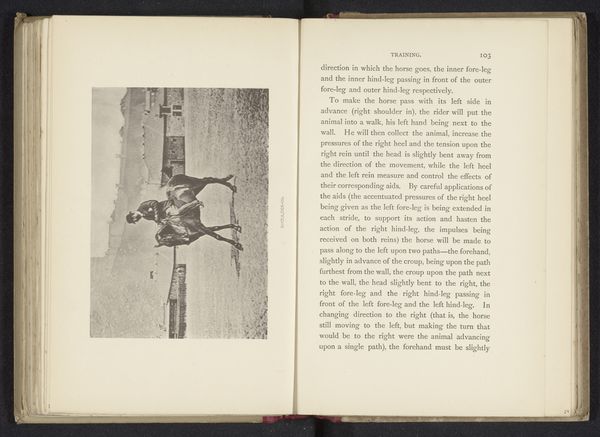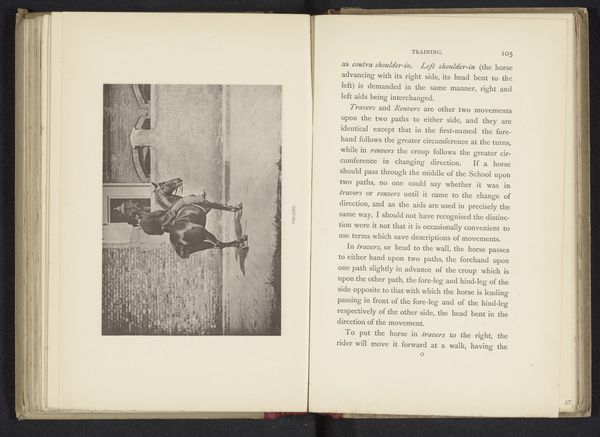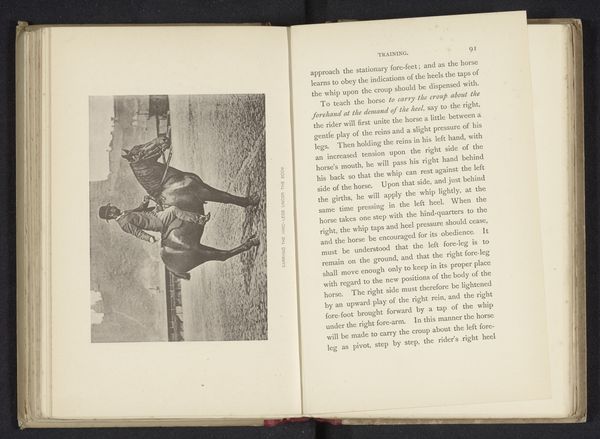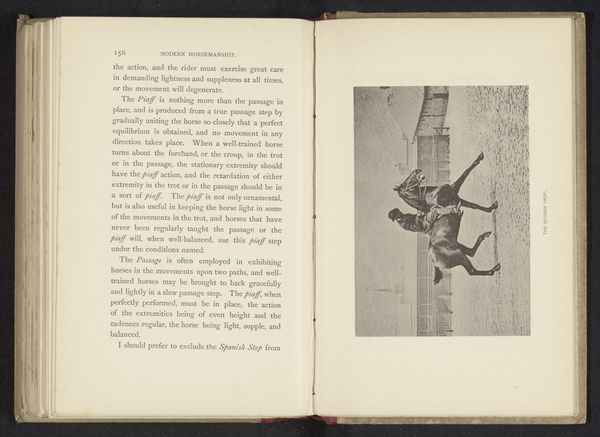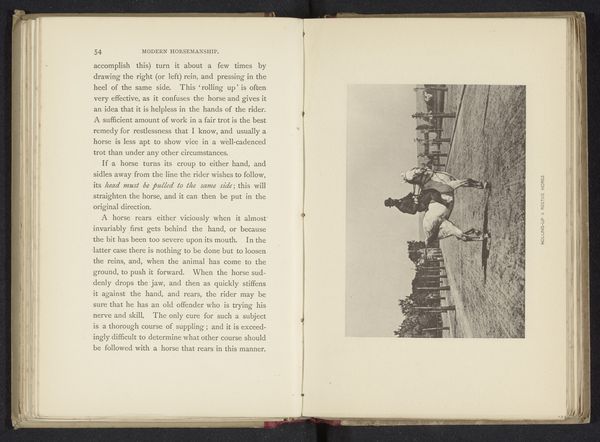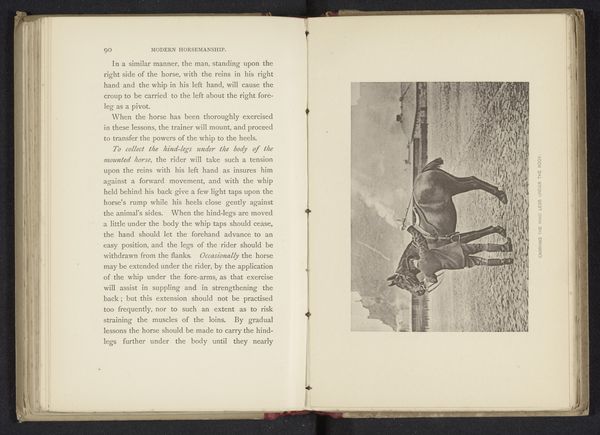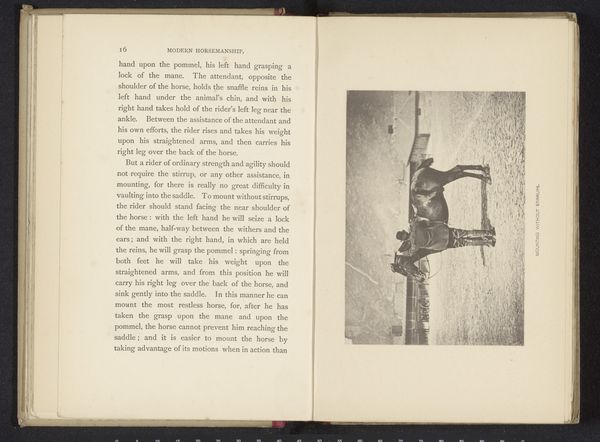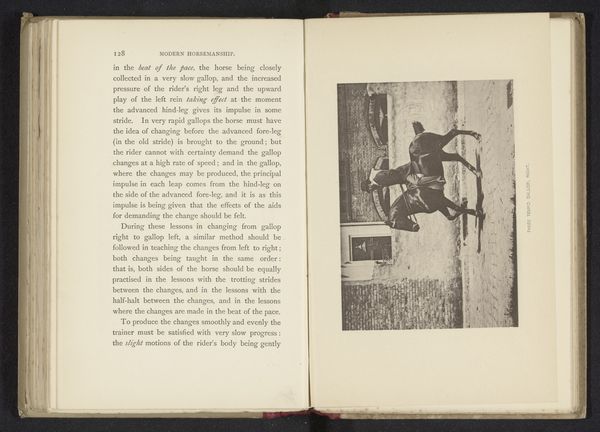
print, paper, photography
still-life-photography
paper
photography
paper medium
Dimensions: height 98 mm, width 138 mm
Copyright: Rijks Museum: Open Domain
Curator: This intriguing photographic print, titled "Man op een paard in zijwaartse galop", or "Man on a horse in a sideways gallop," resides here at the Rijksmuseum and predates 1889. The piece intrigues us with its depiction of early equestrian training methods. Editor: Immediately, the image strikes me as still, yet in motion. The monochromatic palette gives it a timeless quality, almost like a drawing, despite being an early photograph. The diagonal composition imparts dynamism to the ostensibly still image. Curator: Indeed. Notice how the light catches the paper fibers and the tonality shifts subtly. These aesthetic choices serve to amplify the formal qualities of the image, underscoring the deliberate balance of the horse and rider's form against the negative space of the backdrop. Editor: From a material standpoint, it's also captivating. Look at the texture of the print, almost aged; the fibers of the paper on which it is captured—these highlight the means of image-making, grounding the elegant scene. Considering this was pre-mass media, the choices in capturing it speak to privilege and available time, no? Curator: Possibly. I find the linear elements and composition almost constructivist in their geometric harmony. There is also the implied symbolic dimension within. Think of the semiotics of posture: How do line, shape, tone, and position represent social relationships, discipline and mastery over nature? Editor: Perhaps. I would also look at the cost of photographic materials and print runs at the time. Labor must certainly also play a role as equestrian skills had to be captured for record or didactic purposes. What type of labor was considered acceptable to immortalize through an expensive new technology such as photography? Curator: Certainly points to further exploration, and this intersection of the equestrian and technological reveals the piece as not simply a depiction of a moment but rather, an intersection of cultural forces. Editor: It really gets one thinking about who and what get recorded for the ages, and why we memorialize the subjects that we do.
Comments
No comments
Be the first to comment and join the conversation on the ultimate creative platform.
